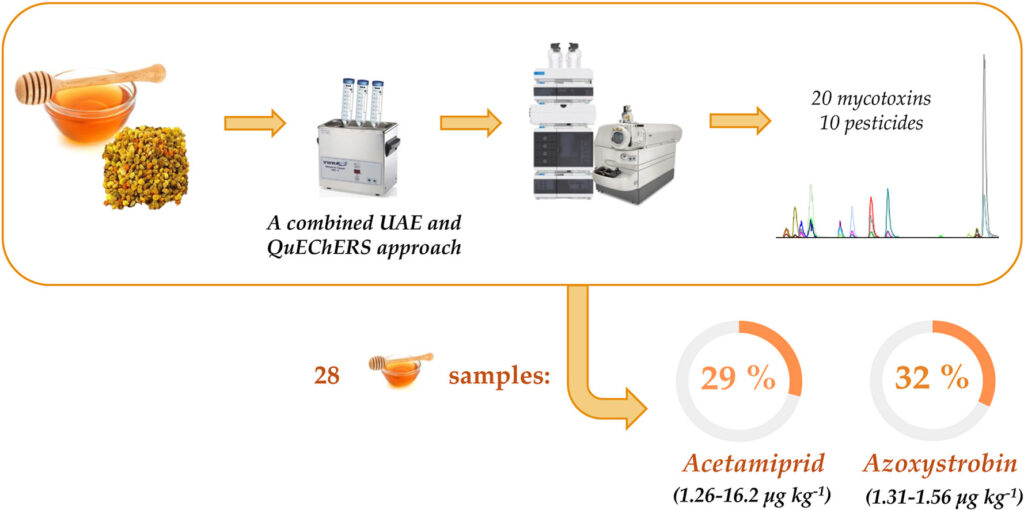- Acknowledgements: This work was supported by Project PID2021-127804OB-I00 funded by MCIN/AEI/10.13039/501100011033 ‘A way to make Europe’ and the Andalousian Government (Project ref. PROYEXCEL_00195). MAR gratefully acknowledges the contract from the project PROYEXCEL_00195, funded by Consejería de Universidad, Investigación e Innovación, Junta de Andalucía. JMS thanks the University of Almería for his “Convocatoria de Recualificación del Sistema Universitario Español-Margarita Salas” postdoc grant under the “Plan de Recuperación Transformación” program funded by the Spanish Ministry of Universities with European Union's NextGenerationEU funds. MHM gratefully acknowledges the grant RYC2023-044255-I funded by MCIU/AEI/10.13039/501100011033 and FSE+. Funding for open access charge: Universidad de Granada / CBUA
- Authors: M. Álvarez-Romero, J. Marín-Sáez, A.M. García-Campaña, M. Hernández-Mesa, L. Gámiz-Gracia.
- Reference: Food Control 178 (2025) 111504.
This work presents an ultrasound assisted extraction (UAE) combined with a QuEChERS approach, followed by liquid chromatography-tandem mass spectrometry (LC-MS/MS) analysis, for the determination of 20 mycotoxins and 10 pesticides in bee pollen and honey samples. The method was validated according to SANTE/11312/2021 guideline. Linearity was satisfactory (r > 0.99), with LODs ranging from 0.03 to 13.3 μg kg−1 and LOQs from 0.11 to 44.4 μg kg−1, except for five analytes in pollen. Trueness, expressed as apparent recoveries and evaluated at three concentration levels, was between 70 and 120 %, except for three compounds in honey and eight in pollen. RSDs for precisions were below 20 %. The method was applied to 28 honey and six pollen samples. Acetamiprid and azoxystrobin were detected in 29 % and 32 % of the honey samples, with concentration ranges of 1.26–16.2 μg kg−1 and 1.31–1.56 μg kg−1, respectively. No contaminants were found in any of the pollen samples.




